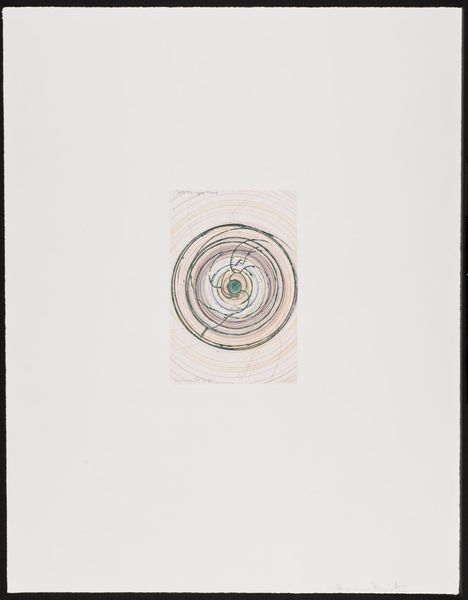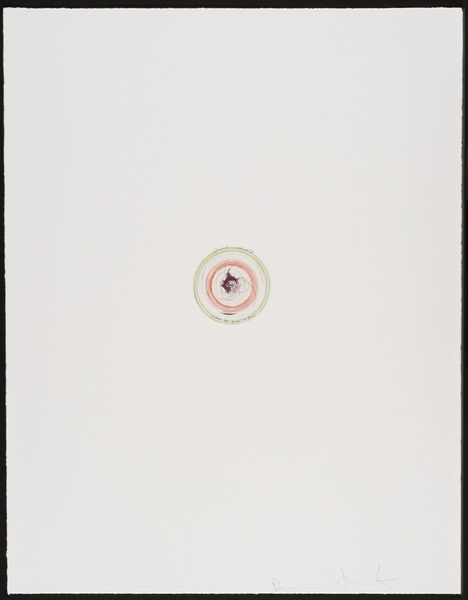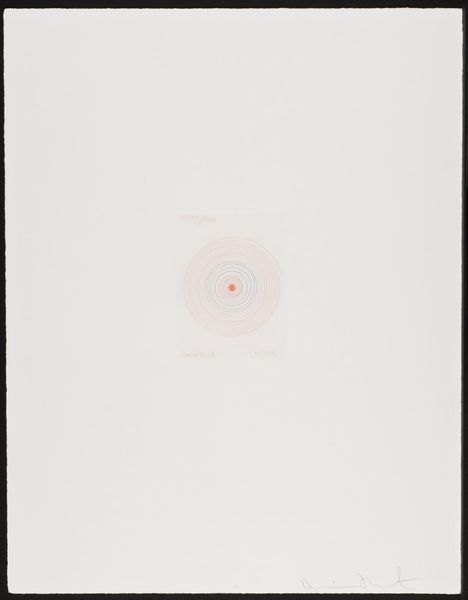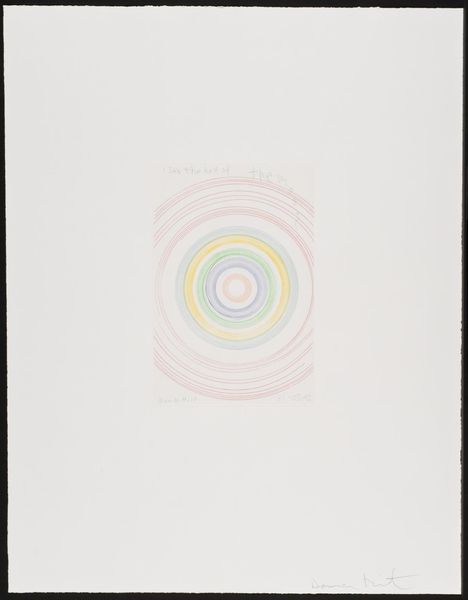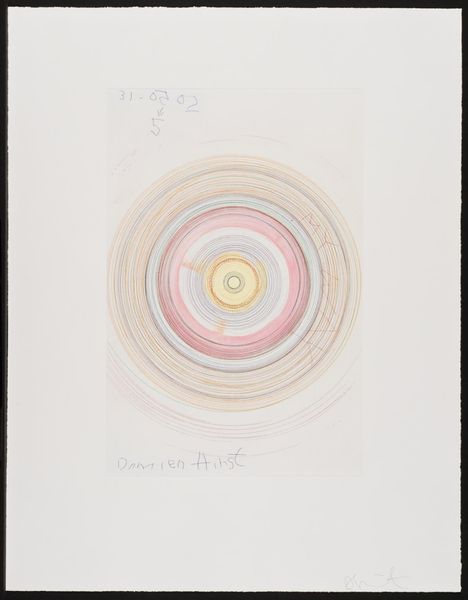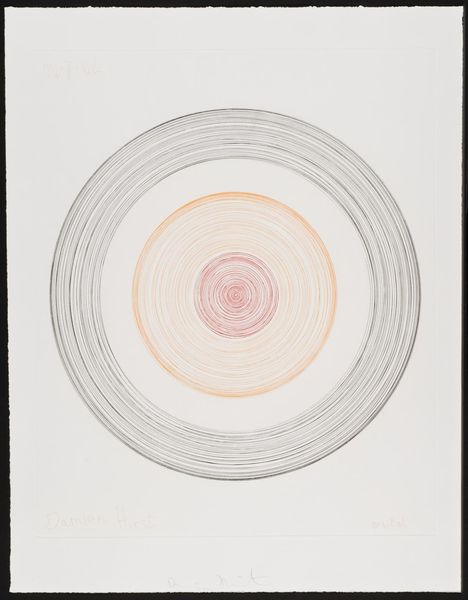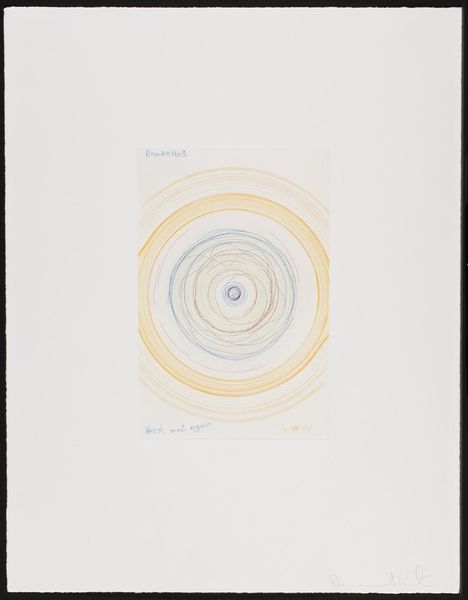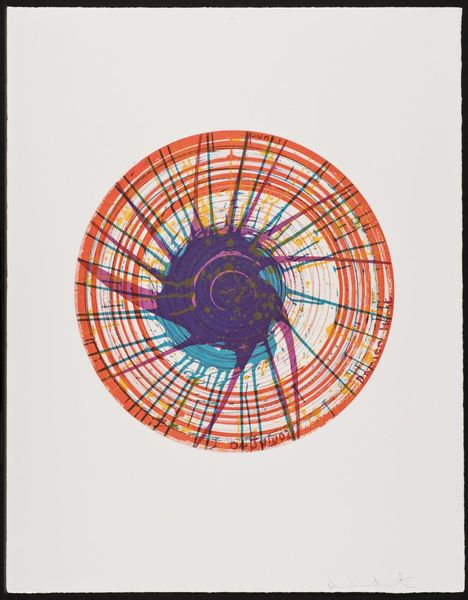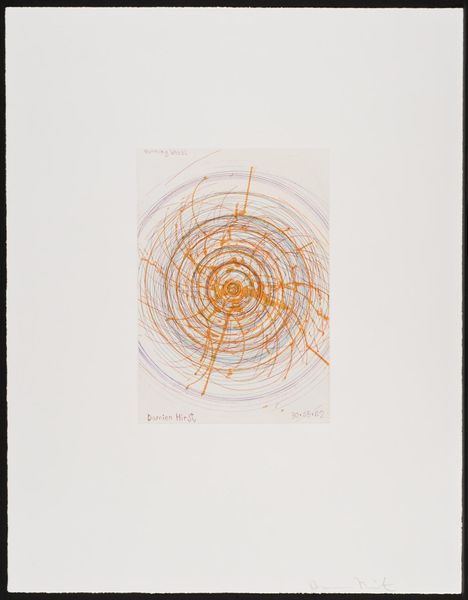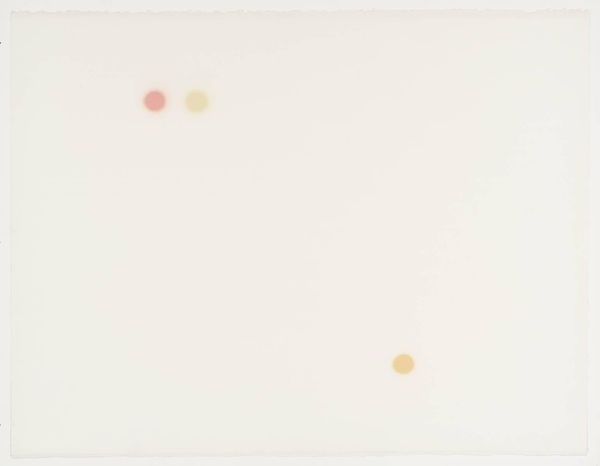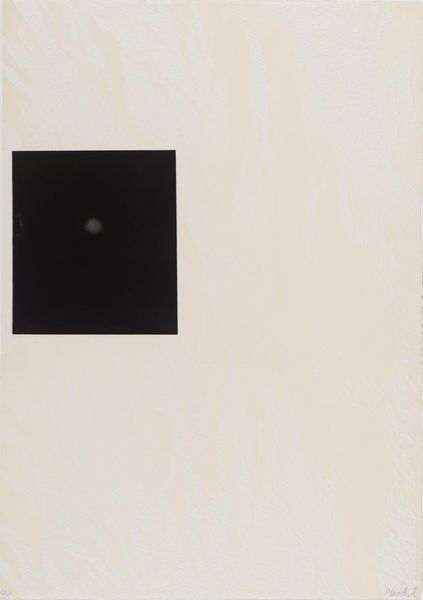
Dimensions: support: 910 x 710 mm
Copyright: © Damien Hirst and Science Ltd. | CC-BY-NC-ND 4.0 DEED, Photo: Tate
Editor: This Damien Hirst work, "Tie a yellow ribbon round the old oak tree," presents a captivating spiral. It feels both ordered and chaotic. What do you see in this piece? Curator: The spiral, a potent symbol across cultures, often represents the cyclical nature of life, death, and rebirth. Hirst's use evokes a meditative quality, yet the off-center composition disrupts any sense of perfect harmony. Does that resonate with you? Editor: Yes, I see that. It's like the suggestion of order, but with a human imperfection layered on top. Curator: Precisely. The ribbons, though abstract, may symbolize hope and homecoming, referencing the song. This juxtaposition highlights our longing for stability within the ever-turning wheel of existence. Editor: I hadn't thought about it that way. Thanks! Curator: A pleasure. It reveals how art can simultaneously evoke cultural memory and challenge our perceptions.
Comments
tate 7 months ago
⋮
http://www.tate.org.uk/art/artworks/hirst-tie-a-yellow-ribbon-round-the-old-oak-tree-p13035
Join the conversation
Join millions of artists and users on Artera today and experience the ultimate creative platform.
tate 7 months ago
⋮
This is one of the twenty-three etchings that comprise the first volume of two portfolios, In a Spin, the Action of the World on Things I and II. Each etching was made by the artist in London 2002, printed on 350gsm Hahnmuhle paper, proofed and editioned at Hope (Sufferance) Press, London and published by Charles Booth-Clibborn under his imprint, The Paragon Press. There are sixty-eight sets of prints, numbered 1–68 on the colophon page, and six proof copies. Tate’s copy is the second in the edition. Each set is accompanied by a colophon page and presented in a box with an original spin painting in household paint on the cover and the title and artist’s name printed on top. In addition to etchings similar to those in the first volume, the second volume of In a Spin... includes a photograph of the night sky that Hirst took using a long exposure, recording the movement of the stars in the sky caused by the earth’s rotation, and contributing to the notion expressed in the words: the Action of the World on Things. The artist first coined this phrase in 1999, when he was explaining the origin of his spot paintings (see AR00498), differentiating two strands of his work: ‘an involvement with death and decay, and ideas and life: the action of the world on things exists somewhere, and the colour exists somewhere else. And it’s fantastic.’ (Quoted in Damien Hirst and Gordon Burn, On the Way to Work, London 2001, p.119.) In the event, the imagery of In a Spin, the Action of the World on Things I and II unites these two strands.
